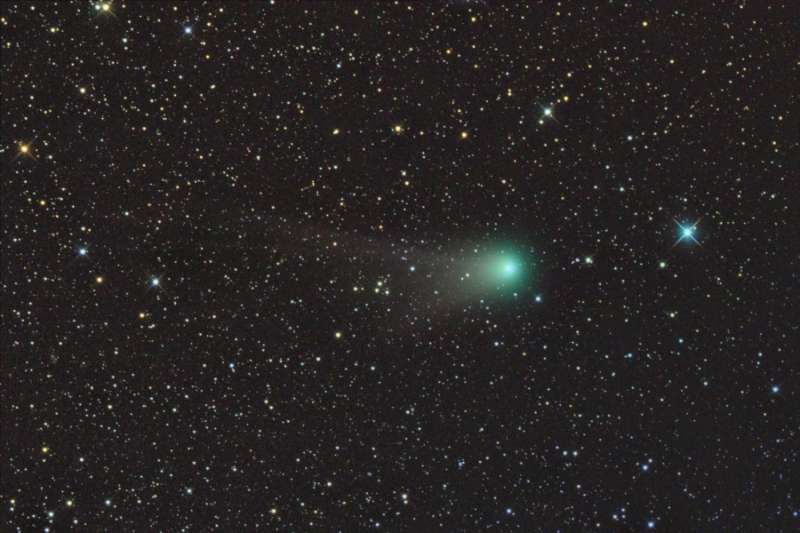
|
Credit & Copyright: Gregg Ruppel
Explanation:
A good target for binoculars and small telescopes,
Comet
Garradd (C/2009 P1) now shines in planet Earth's
evening skies,
a steady performer but just
below naked-eye visibility.
Telescopic
images like this composite from October 15
can find the comet with a lovely green coma,
sporting multiple tails, and lingering against
a background of faint stars.
The field of view spans over 1 degree or about 2 full moons
within the southern boundaries of the constellation
Hercules.
Now around 16 light minutes
(2 astronomical units) away, P1 Garradd is an
intrinsically large comet, but
will never make a very close approach to Earth or the Sun
while sweeping
through the inner solar system.
As a result, the comet will likely stay a sight for
telescopic eyes only, moving slowly
through the sky
and remaining in Hercules during the coming months.
|
January February March April May June July August September October November December |
| |||||||||||||||||||||||||||||||||||||||||||||||||||||||
NASA Web Site Statements, Warnings, and Disclaimers
NASA Official: Jay Norris. Specific rights apply.
A service of: LHEA at NASA / GSFC
& Michigan Tech. U.
Based on Astronomy Picture
Of the Day
Publications with keywords: comet - composite image - Hercules
Publications with words: comet - composite image - Hercules
See also:
- APOD: 2025 November 17 B Comet Lemmons Wandering Tail
- APOD: 2025 September 30 B Comet Lemmon Brightens
- APOD: 2025 September 29 B Two Camera Comets in One Sky
- APOD: 2025 September 26 B A SWAN an ATLAS and Mars
- APOD: 2025 September 18 B Comet C/2025 R2 SWAN
- APOD: 2025 September 16 B New Comet SWAN25B over Mexico
- APOD: 2025 July 7 B Interstellar Comet 3I ATLAS
